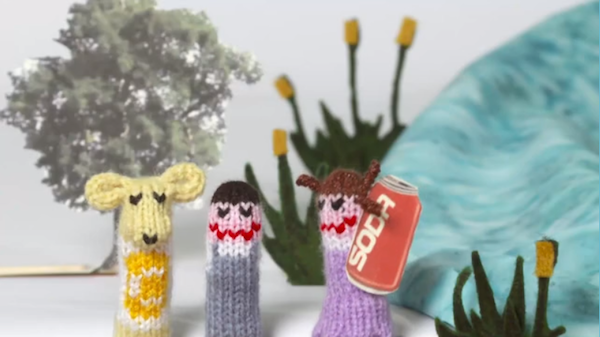

It’s often said that kids today aren’t interested in the news. Could it be because traditional newsrooms aren’t reporting stories with them in mind?
Most third-graders may not need or want comprehensive coverage of, say, tax reform. But there’s a case to be made for tailoring some important news to a pint-sized audience. That was nonprofit California Watch’s attitude when it included a coloring book in its 2011 series on seismic safety.

Now, California Watch has a whole news section just for children. It’s a place where “you can color, watch videos and learn about issues our reporters cover.” It’s also the latest move in the nonprofit’s longstanding effort to distribute their work through nontraditional channels as a way to reach people who need the information they’re reporting. To meet that goal, California Watch’s strategy incorporates multiple platforms, translating work into different languages, and collaborations with media and community partners to get the word out.
“One of the things that I love about California Watch is we’re focused on actual communities because we have a solution-oriented focus,” the site’s public engagement manager, Ashley Alvarado, told me.
So the California Watch reporting strategy isn’t just about putting the information out there — it’s also about empowering people, grown-ups and kids, to do something about what they’ve learned. The star of the “Ready to Rumble” coloring book, Sunny the dog, makes a return for the Junior Watchdogs section, which features an online version of the original coloring book that kids (or, ahem, Nieman Lab reporters) can color using a digital palette.
There’s also a video puppet show — complete with felt props, knitted finger puppets, music and voiceovers — about clean water issues. The three-minute film explores pollution, and how people affect water quality. (This is truly a team effort: Listen for reporter Lance Williams as the voice of the owl scientist.) Next week, California Watch is debuting the Spanish-language version of the video.
The Junior Watchdogs site features a map called “Where’s Sunny?” that shows all of the places where California Watch has shipped its “Ready to Rumble” coloring book. Most of them went to coastal cities in the United States but at least one batch got as far as New Zealand. Another story in the works for the junior audience is based on a 2010 series about unsafe levels of lead in toys, jewelry, and back-to-school products.
The unusual storytelling approach is only one component. California Watch also has to make sure that people know about its work, and that’s Alvarado’s job. There may be an opportunity to tap into a network of schools at some point, but first she’s going to hit the streets. Alvarado has been putting together community toolkits, which she’ll “hand deliver, person by person” to various areas. Each toolkit will contain:
• A DVD featuring the puppet show and a slideshow (an alternative format for those without Internet access)
• Printed versions of an article or articles applicable to the community
• Worksheets to help answer questions that community members might have about the issue that California Watch reported about in their area, including contact numbers for government agencies
• A primer on working with the media
• A one-page information sheet about California Watch and the Center for Investigative Reporting
In much the same way that government agencies and other institutions provide reporters with press kits to help them understand the issues they have to write about, California Watch is giving informational kits to the community based on what it has reported.
Alvarado will start with 100 kits for her trip to two mobile home parks in Coachella, and will distribute kits that include an article about grim living conditions there. There is also a toolkit designed to serve the Maywood community based on coverage of water quality, and a toolkit for unincorporated communities across the state.
“We’re not just writing about a community for another community,” Alvarado says. “That means nontraditional distribution. That means whether we’re putting a story on a postcard, putting a story in a coloring book, attending community meetings, whatever we have to do to [help people] become their own advocates.”
A contrasting example she gives: The New York Times might produce a brilliantly reported piece of journalism. But what if it’s about people who don’t read the Times? Which news organizations are looking out for their interests?
“I always joke and say we’re so old school we’re new school,” Alvarado says. “We are putting an emphasis on actual human-to-human interaction, which is — for whatever reason — becoming endangered.”